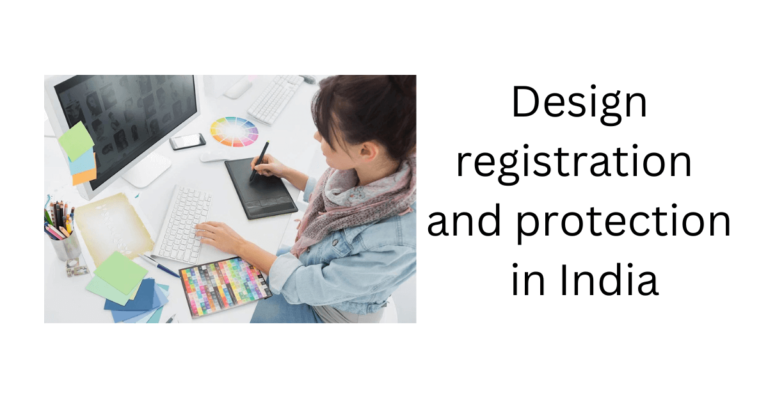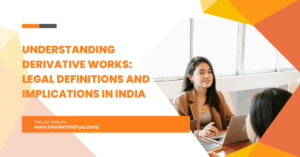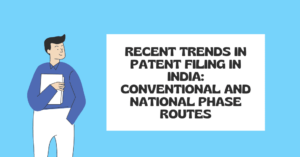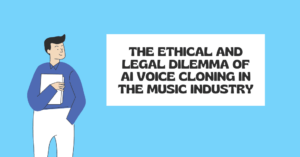It is undeniable that the goodwill and reputation earned in a market contribute significantly to the success of a product or brand in that market; however, this contribution is made after the brand has already established a name for itself and not at the very beginning of the process. But the question is what makes a product famous and different from others, which attracts the consumers towards buying it and making it a success in the market? The answer to this question is “Design”. A design helps a product to make a long-lasting impact on anyone viewing that design, and over the course of time, many brands have started to register their designs in accordance with the Designs Act, 2000. Because it prevents the protected design from being copied or stolen, the Design registration in India is just as crucial as the registration of any other kind of intellectual property.
What is a Design?
In India, a registered design shall include the aesthetics and overall appearance of any product. However, it is important to understand that unlike trademarks law which doesn’t make the registration mandatory, the design protection in India begins only after the registration of a design and not without it.
The Law
In India, the registration of design is been under the Design Act, 2000. It is the law that protects and governs the registration of designs as an Intellectual Property in India. Section 2(d) of the Act defines a design as the shape, configuration, pattern, decoration, or composition of lines or colors applied to any object by any industrial method or means. The item may be two-dimensional or three-dimensional and must be capable of being manufactured and sold separately. The design of the final product should be aesthetically pleasing and evaluated only by sight. The protection of designs excludes any form or principle of construction or anything that is essentially a mechanical device, as well as any trademark, service mark, or artistic creation.
Pre-requisite to register and industrial design in India
In order for a design to be eligible for registration under the Designs Act, it is required to possess the following attributes, as outlined in Section 4 of the Act:
- It ought to be something fresh and unique – like every other kind of intellectual property, a design seeking registration must be new and original, something that has not being copied from any previous works.
- It must not be made known to the general public in any way, either by publishing or through use – The design must be one of a kind and must not have been seen to the general public in any part of India or anywhere else in the globe before, either by its use or its prior publication or via any other means.
- It should be able to be easily distinguished from previously known designs or combination of previously known designs.
- It shouldn’t contain anything that could be considered controversial or indecent- It must be registrable in accordance with section 5 of the Design Act of 2000. The design may not be registered if it violates public morality or offends the public’s sensibilities.
It was ascertained in the case Bharat Glass Tube Ltd. v. Gopal Glass Works Ltd., 2008 (10) SCC 657: 2008 (7) SCR 397, that the phrase “new or original” refers to the fact that the design that has been registered has not been published anywhere or made known to the general public. It was either something that had never been done before or something that had never been replicated by anyone.
Who can apply for a design registration?
A design that is original, hasn’t been published before in another nation, and doesn’t appear to be in conflict with any local laws or regulations may be registered by any proprietor (design owner) who submits an application. The word “proprietor” has been defined in accordance with Section 2(j) as the individual who:
- Is the author of the design;
- Has acquired the design for a legitimate consideration; and
- Anyone to whom that design has been devolved from the original title holder.
Registration Procedure of a Design
The design registration confers the Designs owner several rights, the most essential of which is the ability to take legal action against design infringement or piracy. The process of registering designs in India is outlined in Chapter 2 of the Design Act. To successfully register your design, you will need to follow the following steps:
- Prior Search
The criterion that a design be innovative and original can only be satisfied by conducting prior work searches in the accessible databases. Searches for ‘design’ in India are conducted using Locarno classification, which is an international classification system used for the registration of Industrial Design. Locarno classification has 32 classes and the prior search is to be conducted under the class the article belongs to.
- Filing of application- with statement of novelty
If no identical designs were located during the earlier search, the next step is to submit an application for registration in the prescribed format and with the prescribed fee to the Design & Patent Office, Kolkata.
A brief declaration of novelty (notice that to be eligible for registration, a design must be fresh and original, as stated above) and a disclaimer should be placed on the representation, which will result in faster scrutiny and more specific protection.
- Examination Stage
After the application has been filed, the Controller of Designs conducts an examination. If the controller is unsatisfied or has any concerns about the application, he or she may file an objection. The applicant is then given the opportunity to submit a timely (within 3 months) response to the examination report.
- Acceptance
The application is accepted if the Controller deems the written response suitable. Generally, if the Controller has an objection, an opportunity for a hearing is granted; if the Controller is not persuaded by the design during the hearing, the design is rejected. After acceptance, the design is then published in the Official Gazette.
Can priority be claimed for design applications from a foreign application?
In India, the provision to claim priority for design application from a foreign application is provided under Section 5 of the Designs Act, 2000. This section states that an applicant may claim priority for a design application from a corresponding foreign application, provided that the foreign application was filed within six months of the date of filing of the Indian application and the foreign application is still pending. Priority documents should be filed with the relevant patent office. The priority document must include a copy of the foreign application and a certified translation of the foreign application, if necessary.
Term of Protection
The duration of design protection in India after its registration is initially ten years. In the event that priority is claimed in regard to a Design, the term is ten years starting from the day the priority was granted.
Before the first period of copyright expires, the term of Design may be extended for an additional period of five years by submitting an application in the required form and paying the prescribed fee to the Controller. This must be done before the initial period of copyright expires.
Registration Fee
The design registration fee in India is variable depending on the kind of applicant:
- The filing fees for a natural person is Rs.1000,
- The filing fees for a small entity is Rs.2000, and
- The filing fee for other entities except small entity is Rs.4000.
Examples of ‘Designs’ published in the Patent Journal dated 16/12/2022
Benefits of registering a design
Since a consumer frequently bases their purchase decision on a product’s aesthetics, including shape, appearance, color scheme, ornamentation, etc., design registrations are very helpful in this regard. Based on the aesthetics of the product, consumers may also link it to a specific business or quality level. For businesses, differentiating their products from those of competitors is easiest through product design. Additionally, in order to increase their market share, businesses that make imitation goods frequently replicate the design, or the way a product feels and looks. Therefore, it is crucial to prevent the design from being copied.
Conclusion
In India, design registration is frequently found to overlap with trademarks and copyrights. People look for ways to register their designs as trademarks or as artistic works under copyright because the duration of protection for a design in India is maximum 15 years, whereas a trademark is protected for life (based on renewal) and a copyright exists during the author’s lifetime and also 60 years after the author’s death. Steps should be taken to increase the duration of protection offered for designs in order to get more individuals applying for design registration and keep the law alive.










